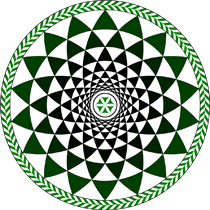Speaker
Prof.
Shin-ichi Ohkoshi
(Department of Chemistry, School of Science, The University of Tokyo)
Description
Development of functional materials has been extensively studied in the field of solid-state chemistry. Up to date, we have developed various unique photomagnetic mateirals using cyano-bridged bimetallic assemblies [1‒4]. Furthermore, we have reported a new crystal structure of titanium oxide, lambda-titanium oxide (λ-Ti3O5), which exhibits a photo-reversible metallic (Pauli paramagnetic) phase to semiconductor (non-magnetic) phase transition at room temperature [5]. In addition to these photo-functional materials, we have developed a pure phase of epsilon-iron oxide nanomaterials, which exhibit a high frequency millimeter wave absorption [6]. Here, I introduce novel photomagnetic functionalities on iron-octacyanoniobates, light-induced spin-crossover magnetic phenomenon in Fe2[Nb(CN)8](4-pyridinealdoxime)8∙2H2O [3], and photoreversible light-induced spin-crossover phenomenon, spin-crossover-induced second harmonic generation (SHG), and photoswitching of magnetization-induced SHG (MSHG) in Fe2[Nb(CN)8](4-bromopyridine)8∙2H2O [1]. In addition, novel thermodynamic functionality of lambda-titanium oxide is introduced [7].
Light-induced spin-crossover magnetic phenomenon: The long-range magnetic ordering of the FeII(HS)(S= 2) site network in a metal–organic framework caused by a light-induced excited spin-state trapping (LIESST) effect. The iron-octacyanoniobate, Fe2[Nb(CN)8](4-pyridinealdoxime)8∙2H2O, exhibits a spin-crossover magnetic properties, in which a strong superexchange interaction between photo-produced FeII(HS) and neighbouring NbIV(S= 1/2) atoms operates through CN bridges. The photomagnetic phase showed magnetic transition at 20 K and a coercive magnetic field of 240 Oe.
90-degree optical switching of output SH light in a chiral photomagnet: A novel magnetooptical phenomenon, 90-degree optical switching of output SH light is first observed in a chiral photomagnet. We developed a new chiral structured magnet, where Fe ions and Nb ions are three dimensionally bridged by CN ligands. By alternatively irradiating with 473-nm blue light and 785-nm light, the spontaneous magnetization of the material can be reversibly switched. Using this chiral photomagnet, we investigated SHG nonlinear optical effects. As a result, at a nonmagnetic state before light irradiation, input light with a horizontal polarization plane was converted to an output light with a vertical polarization plane. However, when the sample was transformed into a magnetic state (photomagnetic state I) by irradiating with 473-nm light, an output light with a horizontal polarization plane was observed. Furthermore, when irradiated with 785-nm light to photogenerate a magnetic state with weak magnetization (photomagnetic state II), the polarization plane of the output light was returned to vertical. In this way, we succeeded in 90-degree switching of the polarization plane of the output SH light by changing the state of the magnet with 473-nm and 785-nm lights. There have not been any other reports of chiral photomagnets, and this is the first successful example. With the development of such a novel material, chirality and magnetic properties were coupled to exhibit 90-degree switching of the polarization plane of the output light.
(1) S. Ohkoshi, et al., Nature Photonics, 8, 65 (2014). (2) S. Ohkoshi, et al., Acc. Chem. Res., 45, 1749 (2012). (3) S. Ohkoshi, et al., Nature Chemistry, 3, 564 (2011). (4) S. Ohkoshi, Nature Materials, 3, 857 (2004). (5) S. Ohkoshi, et al., Nature Chemistry, 2, 539 (2010). (6) A. Namai, S. Ohkoshi, et al., Nature Communications, 3, 1035 (2012). (7) H. Tokoro, S. Ohkoshi, et al., Nature Communications, 3, 1035 (2012).
Author
Prof.
Shin-ichi Ohkoshi
(Department of Chemistry, School of Science, The University of Tokyo)

